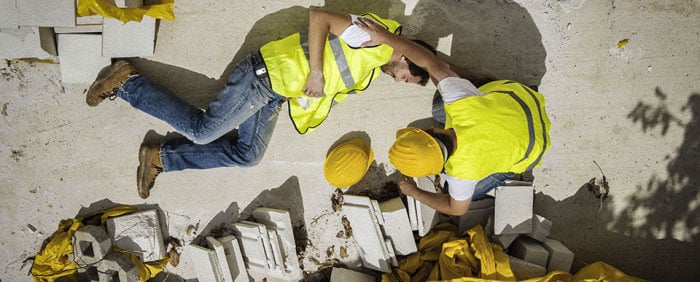Blackline Safety is a technology leader driving innovation in the industrial workforce through IoT (Internet of Things). With connected safety devices and predictive analytics, Blackline enables companies to drive towards zero safety incidents and improved operational performance. Blackline provides wearable devices, personal and area gas monitoring, cloud-connected software and data analytics to meet demanding safety challenges and enhance overall productivity for organizations with coverage in more than 100 countries. Armed with cellular and satellite connectivity, Blackline provides a lifeline to tens of thousands of people, having reported over 200 billion data-points and initiated over seven million emergency alerts. For more information, visit BlacklineSafety.com and connect with us on Facebook, Twitter, LinkedIn and Instagram.
Slips, Trips and Falls in the Workplace — 6 Tips to Reduce Them
Blackline Safety, Leader in Connected Gas Detection & Lone Worker Safety
November 29, 2012
Slips, trips and falls
Slips, trips and falls are one of the largest causes of injuries in workplaces around the World. In 2010, the United States National Safety Council registered a total of 26,100 fatalities as a result of falls (an increase of 7% from the previous year). In Canada, falls make up the vast majority of injuries suffered by people aged 12 and older and in the UK, over 10,000 workers were injured by slips, trips and falls in 2011.

With such significant statistics, it is clear the slips, trips and falls cause a lot of damage to both individuals and businesses. Employees working alone are particularly vulnerable, but how can they be reduced in number? While there is no way to eliminate all slips, trips, and falls, it is most definitely possible to reduce both the number, and the severity of such events. Here are six tips to help you keep your workplace on the right track to reducing your employees' risk of injury.
1. Wear appropriate footwear. Not all shoes will provide you with the traction that you need on every floor. If possible, choose a pair of non-slip shoes.
a. Many new rubber-soled non-slip shoes will still to slip and slide immediately after purchase. Take them out for a 30-minute walk on a rough concrete sidewalk or gravel road to develop some roughness on the sole and improve traction. Alternatively you can take the shoes off and scratch the heels with a rock or even a knife. Doing so will provide the shoe with additional grip that the shoe would otherwise not provide until it becomes broken in.
2. Clean up spills and leaks immediately. If the area of wetness is located on the floor, be sure to place a “wet floor” sign visibly near the area.
3. Ensure that no objects are resting on the floor in designated walkways or open areas. This includes boxes and cases!
4. Never work in the dark. Doing so can increase the chance that you will fail to see slippery areas, objects on the ground, or even a person coming around a corner.
5. Do not climb onto a chair (especially one with wheels!), desk, or other surface in order to reach objects located on high shelves. Instead use a ladder and ask someone to spot you as you climb.
6. Do not carry boxes, crates, or any load that obstructs your line-of-sight. Doing so can cause risk of collision, slip, trip or a fall to yourself, as well as to others that may be walking nearby.
These tips may not completely eliminate slips, trips and falls in your workplace, but they certainly will help.
Loner worker safety and slips, trips and falls
Blackline's lone worker safety monitoring solutions include True Fall Detection® technology that enables businesses to proactively know that an employee needs help. With real-time wireless communication and cloud-hosted safety monitoring software, a live monitoring team is able to manage an immediate emergency response directly to the employee's location.
Get In Touch
Let’s start a discussion about your safety challenges and needs.
Related Blog Posts
When Seconds Matter: Protecting Emergency Responders and the Public from Radiation
March 28, 2025
Picture the scene: a firefighter races to a dumpsite unaware that improperly disposed of radioactive materials are present. The Geiger counter at the...
Real-life Incident: Anna’s Story – Heart Attack While Working Alone
January 22, 2025
‘Please hurry!’How Anna’s G7 Saved Her Life Pain ripped through Anna’s chest and back, taking her breath away. She felt dizzy and like she was...
Real-Life Incident: Leo’s Story - Stranded in the Wilderness
December 13, 2024
'I am stranded': Well site inspector credits Blackline connected wearable device for facilitating remote backcountry rescue Leo felt the quad’s...


